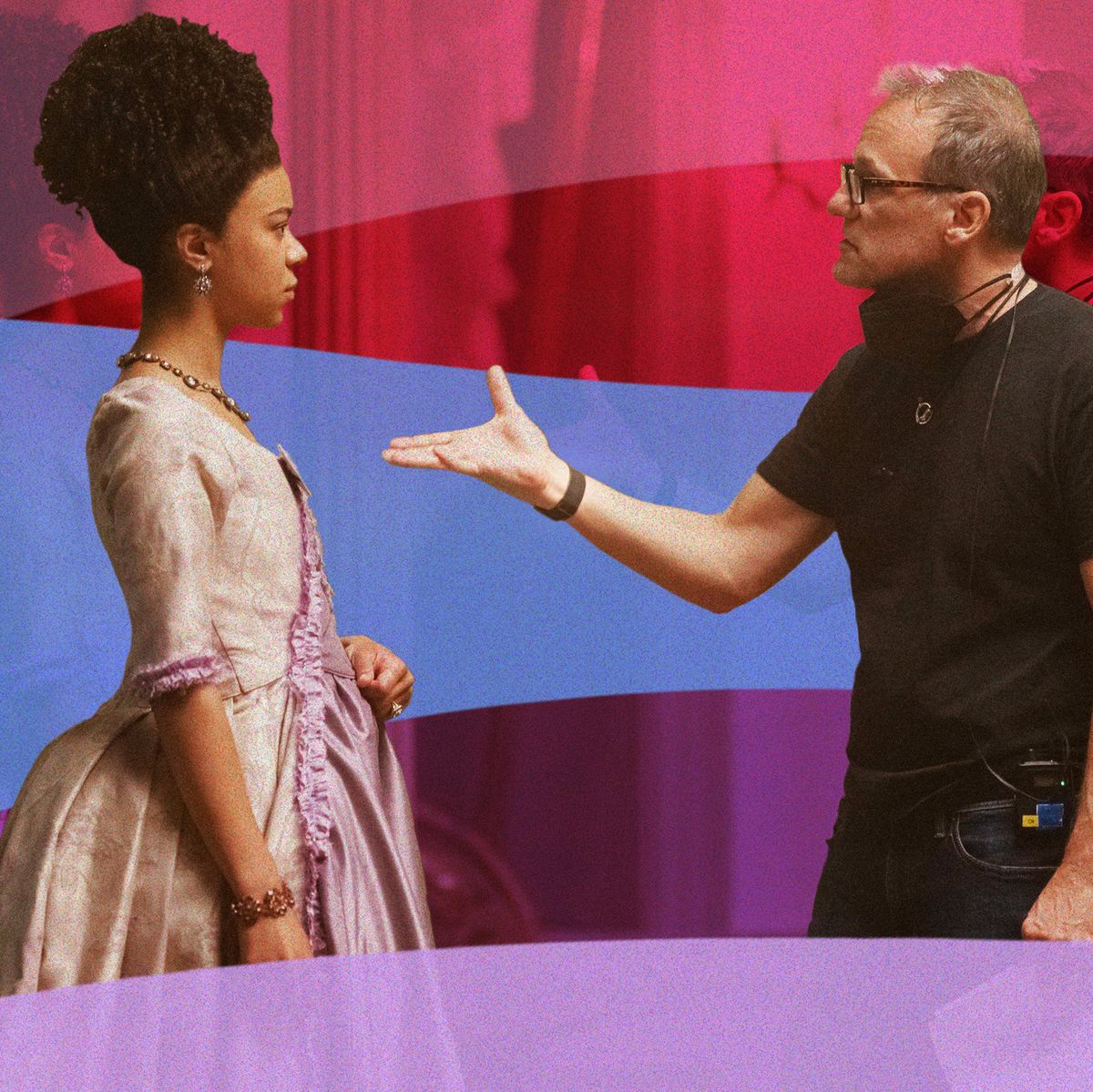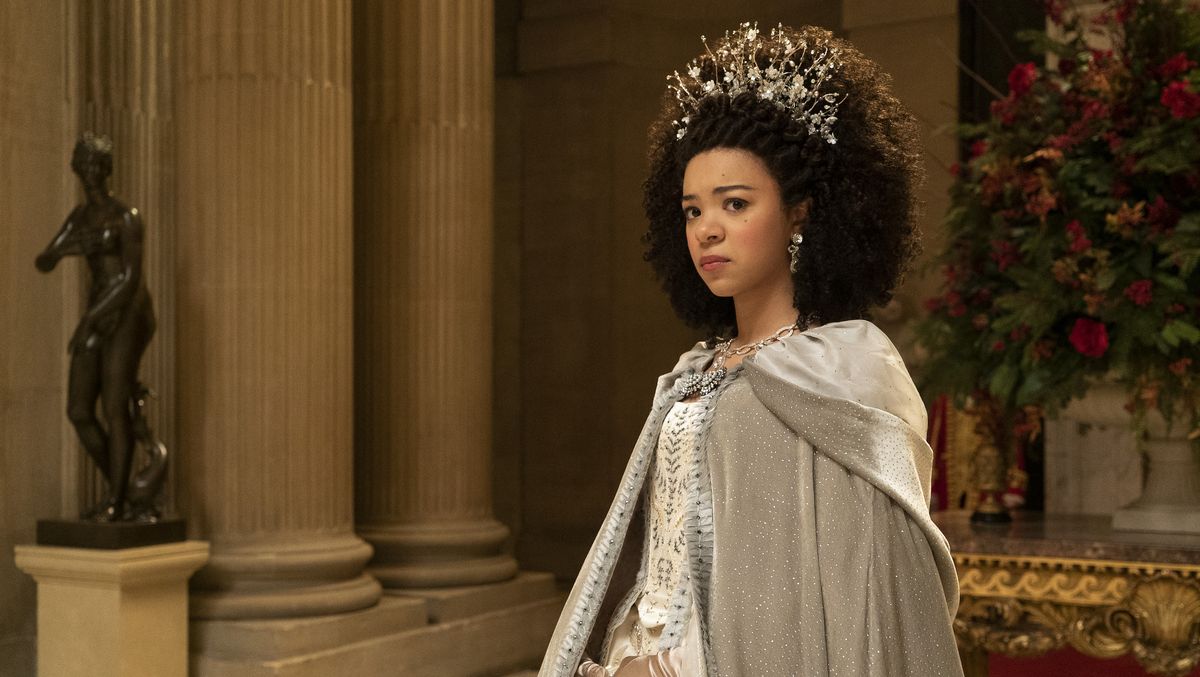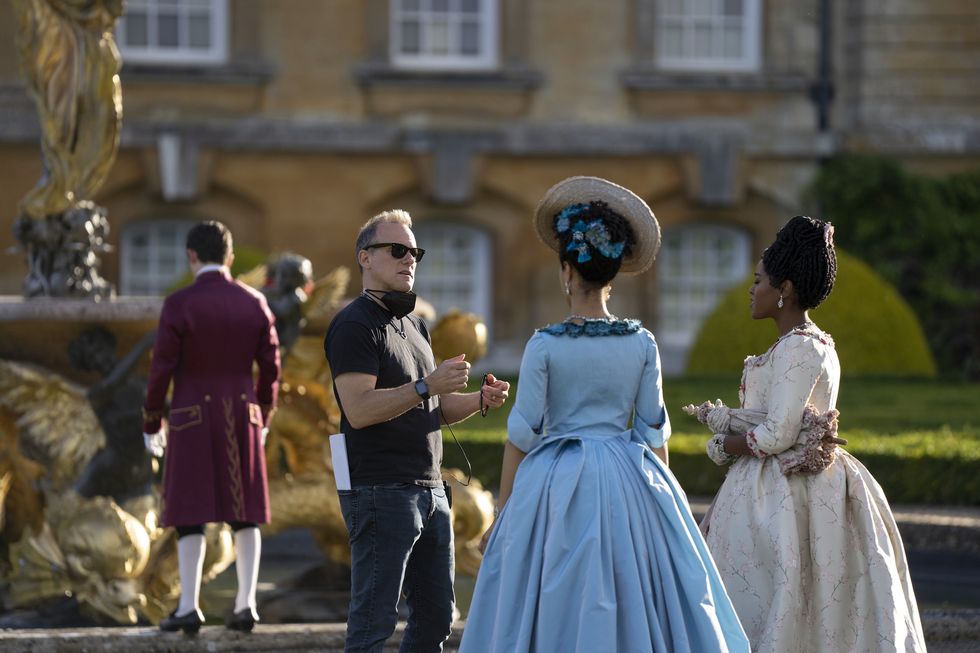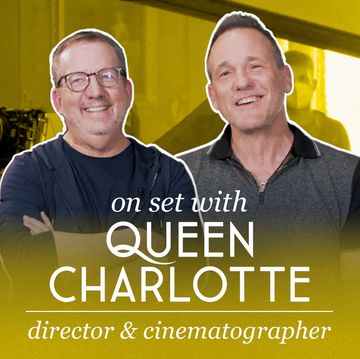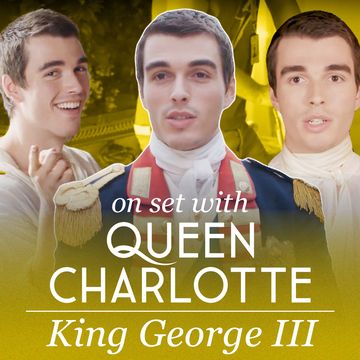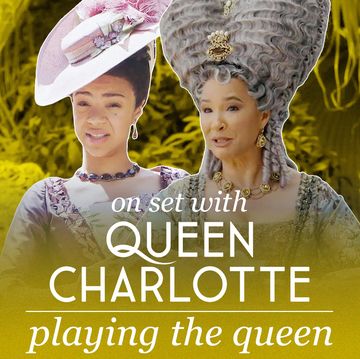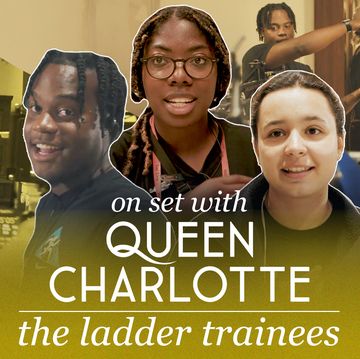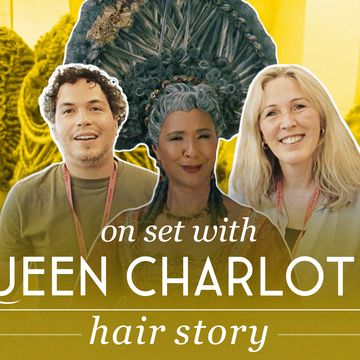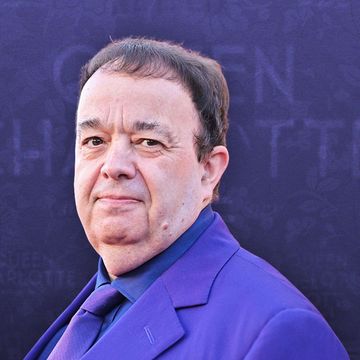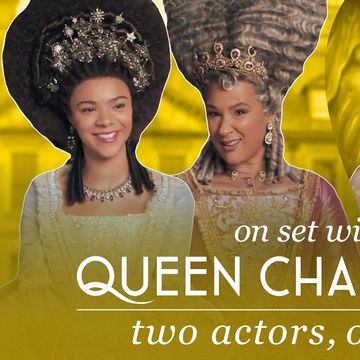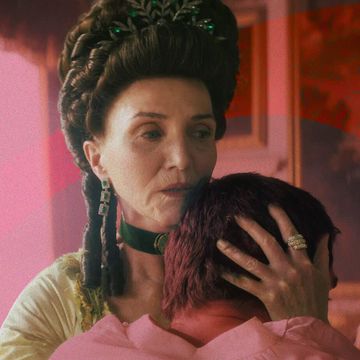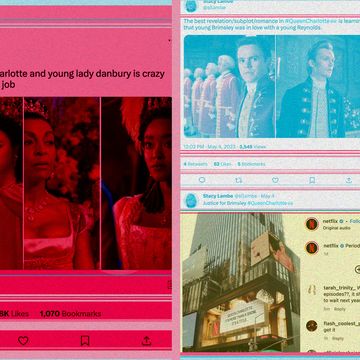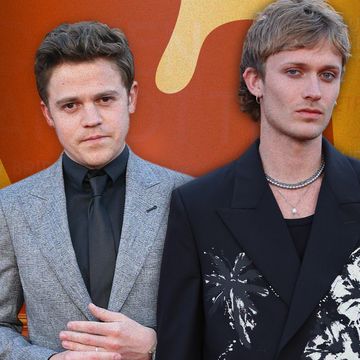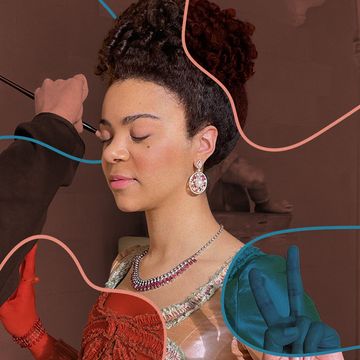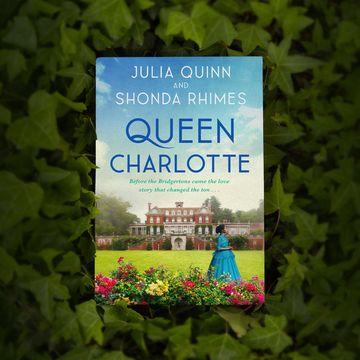Tom Verica had a pretty great career going for himself as an actor before he “got bit” by the directing bug, as he describes it. In 2002 — 13 years after he made his first television appearance as a day player on Quantum Leap — he got his big break and was starring in NBC’s 1960s family drama, American Dreams. He knew that he was fortunate, and he was happy, but something in him seemingly wasn’t entirely creatively fulfilled.
“I was always really drawn to visual storytelling,” he says. “I can recognize good writing, but I’m not a writer, though I’ve tried, and I value and respect those who do it well, but what I love doing is taking that material, seeing it, and physicalizing it in a visual sense. It was the acting angle too. It was a different way to be involved in the acting, knowing emotionally what actors go through and how to shape [their performances]. Those are the things that kind of drew me in [to directing].”
It was on American Dreams that Verica made his network directorial debut as well. Two seasons into a show that lasted only three — and after he directed two short films to prove he could actually do it — Verica helmed two episodes of the series in 2004.
“It just felt like a natural fit,” he says, referring to the myriad shows he went on to direct, like Boston Legal, Ugly Betty, and The Mentalist, all while taking on small acting jobs too. In fact, he credits back-to-back acting jobs on Clint Eastwood’s Flags of Our Fathers (2006) and David Fincher’s Zodiac (2007) with giving him a master class experience in directing.
“Even though I was hired as an actor,” says Verica, “I was totally being selfish with my directing pursuits and interests by using my time on set to pick their brain and basically have up-front and personal discussions with [my directors]. That really was a tremendous benefit.”
Then in 2007, a director dropped out of a Grey’s Anatomy episode, and Verica was called to fill in with two weeks’ notice. It was an experience that would change his life forever.
“It was probably pretty formal that first time we met,” Verica recalls of his first encounter with Shonda Rhimes. “I think after I turned in my first episode and then came back for a second one, she really liked what I had, and a shorthand [formed] immediately. I tapped into her style and what the style of Grey’s Anatomy was, and I ran with it. But also, trust began to take root pretty quickly; I think we just had similar tastes in how we saw things.”
Verica went on to direct episodes of every show Rhimes produced for the next 15 years — and even acted in some, like his recurring role as Sam Keating, Annalise Keating’s (Viola Davis) husband, on How to Get Away With Murder — including Bridgerton, Inventing Anna, and now Queen Charlotte: A Bridgerton Story, all six episodes of which boast Verica at the helm.
The series, written and executive produced by Rhimes and executive produced by Verica and Betsy Beers, tells the origin story of when Queen Charlotte (Golda Rosheuvel), as her younger self, played by India Amarteifio, lands in 1760s London, betrothed to a man she doesn’t know, King George III (Corey Mylchreest), and how she must navigate the ton, her new relationship, and the royal court. From the beginning, Rhimes fully entrusted Verica with the visual telling of this story and, indeed, he handles the entire series with a deft hand and necessary nuance.
It’s a rare thing to see an acting and a directing career progress as seamlessly as Verica’s has, and he’s under no illusion that he’s been fortunate with the opportunities that Shondaland has provided him. But there’s no denying that Verica’s reputation as a kind, generous, and dedicated director has preceded him time and again. Here, we talk to the actor-director-producer about taking on Queen Charlotte, casting decisions, and some on-set antics, including a cameo from the Bridgerton books series author, Julia Quinn!
VALENTINA VALENTINI: All Shondaland shows are known for using multiple directors, even limited series like Inventing Anna, which you also helped direct. How did it come to be that you directed all of Queen Charlotte?
TOM VERICA: I was actually on the set of Inventing Anna when we had a Zoom meeting during a lunch break about green-lighting Queen Charlotte, and Shonda just threw it out there. She goes, “Tom, I want you to direct all of them.” And at first, I was like, “Well, I don’t know if I could physically do that; let me process that.” But of course, right away I was interested. I’ve always been interested in directing a whole limited series because I could be the architect of the design and the continuity of tone. Afterward, I called her up and said, “Look, I’m completely on board with this, but how are the optics going to look? What’s the world going to think if it’s you writing everything and me directing everything?” And she says, “I don’t care what the optics look like. I want you to do it because I trust you, and I don’t want to have to talk anyone into what I want and what I see. You know what I want and what I see.” And she was absolutely right. This process has been one of the most seamless and easiest because we haven’t had a lot of chefs in the kitchen.
VV: And Jeffrey Jur was the only director of photography.
TV: Yes! And I’ve worked with him on and off for years, both as an actor and as a director. All these other shows are great because you have different people writing different episodes, different directors, DPs, so you have different point of views, a freshness with someone new who can keep that energy active. But with Queen Charlotte, we wanted to make a united and streamlined vision, and knowing that Shonda has written all of them and diagrammed this whole thing, I felt good about her trust in me and that it would come out to be what she wanted.
VV: How has acting informed your directing?
TV: Story is ultimately what we all latch onto — those emotional elements that allow you to be taken on a journey. Because I came at story for so long as an actor, really experiencing and feeling that was my foundation; that language was part of my body. With directing, it was about educating myself on the technical aspects, but those also felt very natural. I feel fortunate coming in as an actor to be able to approach and talk about scenes and frame things in the terminology that an actor will understand. I think I get a pass with a lot of actors because they know I was one, and as a director, I’m going to understand their journey a bit more.
VV: What were the themes that were most important for you to help deliver in this show?
TV: There’s friendship, there’s love, and there’s the pressure of duty. For me, it was finding the heart amidst all the pomp and circumstance. How does one navigate their personal truth in a world where the stakes are ridiculously high, not only from the royal standpoint but from a race standpoint, a love standpoint, an age standpoint? There were so many obstacles in the way for Queen Charlotte, and that’s what I really love about Shonda’s writing — she throws all those conflicts and barriers in there so that when you take that journey with young Charlotte and you get to flash-forward to our Queen Charlotte of Bridgerton, merging those two worlds, it feels so important. It’s the story of staying true to oneself in a world that seems impossibly stacked against you.
VV: There were some green cast members on this show. Most notably, it was Corey’s first job, and he plays such a meaty role. What was it like directing them?
TV: It was thrilling, and it was terrifying for them, I think. Even though it wasn’t India’s first job, she hadn’t done anything to this scale, and both Corey and Freddie [Dennis, as Reynolds, the king’s man], it was their first jobs out of drama school. We saw things in their auditions, though, that were moments of great quality that we knew would really serve these roles. So, when we discussed taking a chance with newer actors, knowing that I had confidence in working with actors and giving them a safety net of support, knowing what I could do to help guide them and shape them, it felt like a great challenge for me. You have to be patient with someone who has never been on set before and might not understand the technical aspects of starting in the middle of a take, or what a camera is seeing, or moving slightly this way or that. It was crucial to me to have a rehearsal period, which I did with each of these actors. It gave me an insight into their process and how they responded to certain things, certain switches that I could throw at them, but in a nurturing and safe environment without the whole crew there. We also worked together to find the chemistry and connection that they have with one another, but also with me. I think they knew that I was there to guide them and wouldn’t steer them down the wrong road.
VV: What was the discussion like about casting undiscovered actors?
TV: Ultimately, the material is the strength of the piece, and I think it’s important for the audience to not have some preconceived notions, as often happens with well-known actors. It certainly makes sense for many projects, and we understand why because there is a branding automatically in there because people want to watch that particular actor. In a lot of ways, though, Shonda Rhimes is the star of all her shows. And the fact that this show is in the Bridgerton-verse, it already has that built-in audience. So, that gave us the freedom to not have to go with a named celebrity. We, of course, had conversations with our casting department saying we wanted solid actors, but they didn’t need to be names.
VV: I’ve heard that Brimsley, played by Hugh Sachs, is a character you always sort of rooted for or wanted to know more about. And that from Bridgerton season one, even when Brimsley hardly had any lines or development, you would tell Hugh that you really liked Brimsley.
TV: I think it’s probably the actor in me that comes through with a situation like Brimsley’s. Oftentimes, people look at the shiny object, and rightfully so. I mean, in this case, the queen is certainly the shiny object. But the person behind that person … I’m always looking for depth and layers in each of the characters. So, part of my work when breaking down scripts is looking into what would that person be feeling here? What would they be thinking? In a lot of those setups, I found that a lot of directors would just treat Brimsley as the background guy who’s always there. But I thought there was such a golden opportunity for this actor, who I love dearly, who might have a point of view that you can cut to occasionally and have him silently commenting on the situation that would add another layer and element to the scene to give it a dynamic of either levity or knowledge of someone who is in that partnership. Because it is a partnership, and I saw it as such quite early. The two actors themselves have become very close in real life, so not just keeping that relationship [on the] surface, but looking for those deeper levels. In this show, we explore quite a bit more of his character and their friendship through the younger Brimsley [Sam Clemmett]. It was an opportunity that I always seek — to pull back more layers of a scene even when you have an actor who doesn’t have many lines but can equally be informing the story.
VV: I know that Netflix co-chief executive officer Ted Sarandos wanted Queen Charlotte to get made partly because his late mother-in-law was such a big fan of hers. Did that put on any extra pressure for you?
TV: That was a conversation that Shonda and Ted had, and she took it and ran with it. She’d had the idea, and he was on board immediately. Outside that very personal reason of how this thing came to be, I think a lot of people were very intrigued by that character, and where she came from, and how this integrated society came together. And I can’t think of anyone who could better serve that story than Shonda. It made sense right off the bat. But yes, it was an added pressure to deliver on that! [Laughs.] Once the scripts started rolling in, and everyone started watching the dailies, and certainly once we started turning in our cuts, the response was just overwhelming. As a director, it’s a big sigh of relief.
VV: Can you share anything with us from your time on set? I can imagine you have some great stories!
TV: Oh, boy! I have to be careful about which ones I talk about, though! Well, Julia Quinn makes a cameo, which I’m not sure many people know about. Keep an eye out for her in episode six! She came to set one day with her son, and I put them in and told them I was going to open this scene with them.
There are three scenes where an actor is in the scenes but wasn’t there on the day we shot them. I had to shoot this actor a month later against the green screen. They are seamlessly in these three-person scenes, and you would never know it.
VV: I’ve been told you like to make everyone sing “Happy Birthday” every morning. Is that true?
TV: Oh, you really got some inside info! Yes, that’s something I do every day. Sometimes, there are people’s actual birthdays, but rarely, rarely. I will usually just pick a crew member and make up that it’s their birthday and have everyone sing the song to them. It gets the lungs opened up, it gets the air in, it puts everyone in a good mood. And then it embarrasses whoever it is that I select for the rest of the day because people go up to them and wish them a happy birthday. A lot of them didn’t even have the heart to tell people that it wasn’t, and they’d just say thank you [laughs].
VV: As creators with a platform, we get to say something about the world and to the world. What is that message for you?
TV: I am very passionate about Bridgerton and Queen Charlotte, and how the origins of this particular world has created a pop culture juggernaut. It’s an honor to be able to show that and shed new light with new actors in a way that is hopefully visually very satisfying, emotionally gut-wrenching, and makes you laugh a lot. I think the show has a heart of its own that carves out its own space in a very powerful way.
Valentina Valentini is a London-based entertainment, travel, and food writer and is also a senior contributor to Shondaland. Elsewhere, she has written for Vanity Fair, Vulture, Variety, Thrillist, Heated, and The Washington Post. Her personal essays can be read in the Los Angeles Times and Longreads, and her tangents and general complaints can be seen on Instagram at @ByValentinaV.
Get Shondaland directly in your inbox: SUBSCRIBE TODAY
